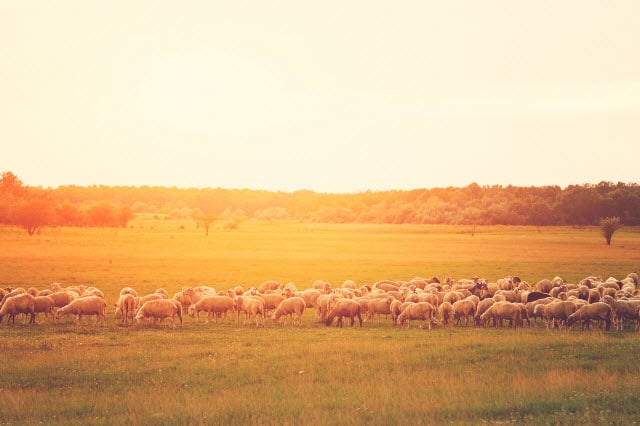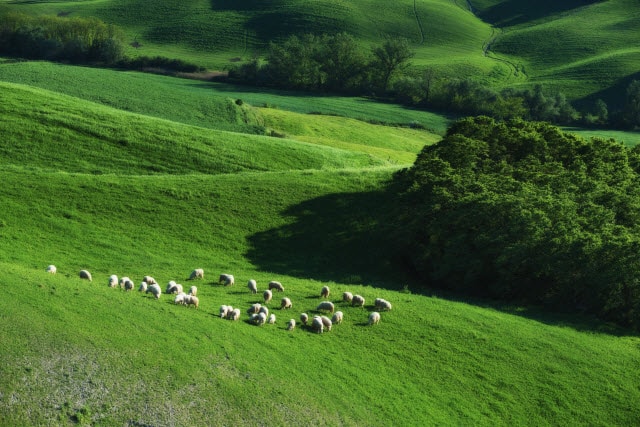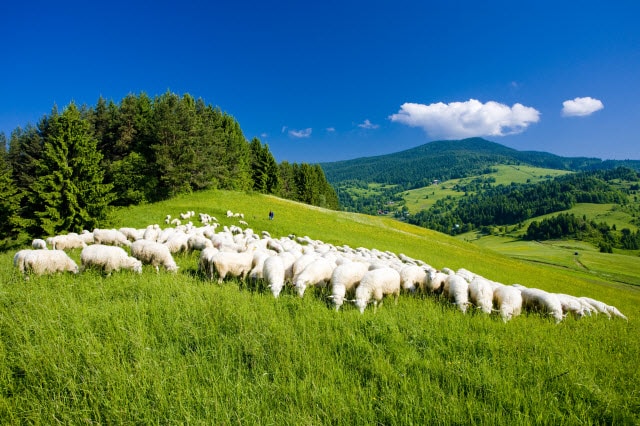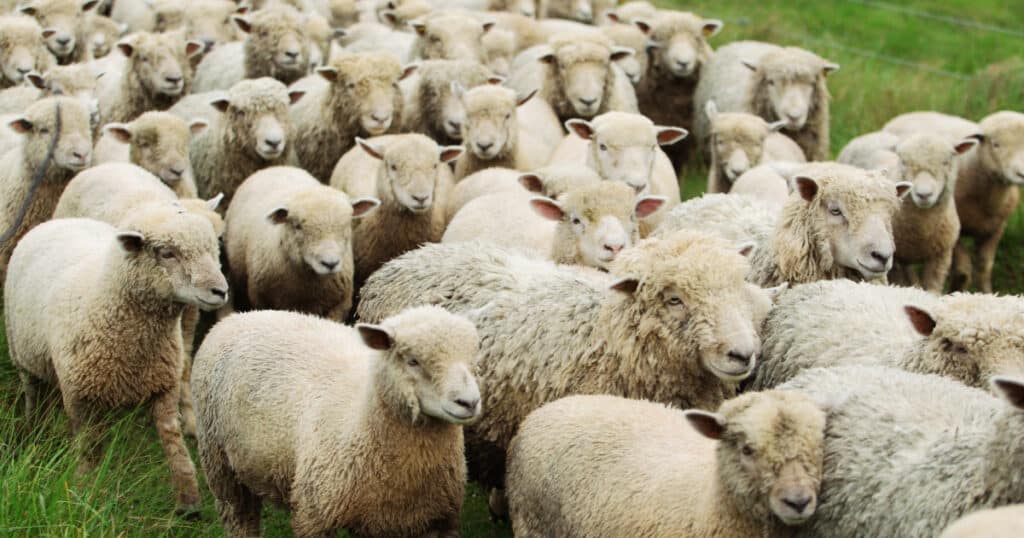Sheep are gregarious, meaning they prefer to stick together and move as a group. It’s a defense mechanism because fleeing is their only way to evade predators. If you’ve seen a large number of sheep moving together through a field, you may have wondered what a group of sheep called. Naming conventions can be confusing, and it’s a common question for those first learning about sheep.
In this article, we’ll explain the most common names for a group of sheep. We’ll also share some facts about how sheep are handled in the United States and around the world.
What is a Group of Sheep Called? (answered)
A group of sheep is usually referred to as a flock, although some ranchers refer to large groups of sheep as their herd. You might also hear the words drove and fold used to describe a gathering of sheep, though these terms tend to be rarer. They have very localized use (typically within the UK).
What’s the Difference Between a Herd and a Flock of Sheep?
Generally, a relatively small numbered group of sheep is a flock. Larger farms with huge numbers of sheep in fenced fields will often refer to their group of sheep as a herd.

Confusingly, herded sheep (those led by shepherds and moved en masse to feeding grounds with the use of herding dogs) are a flock. Whereas sheep, or cattle, occupying a large pasture and not herded, are collectively called a herd.
Where Did These Words Come From?
The word flock comes from Old English “flocc”. The original meaning was ‘a group or body of people’, however this went out of fashion and was reintroduced as a means to refer to a collection of animals.
Herd likewise comes from the Old English “heord”, and was always used to refer to a grouping of farm animals.
Other Words for Flock or Herd
There are a number of other words to describe a flock of sheep and all of them have slightly different meanings.

Below is a list with a brief definition of each:
- Drove – Like ‘herd,’ drove refers to how the animals are ‘driven,’ like ‘herded’.
- Fold – i.e to enfold and confine a group of sheep together.
- Drift – referring to movement of the sheep, i.e. slowly and seemingly aimlessly.
- Trip – In Middle English, the word “trip” referred to a group moving simultaneously and frequently described livestock. While rarely used today, “trip” still refers to either an individual or collective outing.
Collective Nouns
As the name suggests, collective nouns are terms which refer to a collective, or grouping of persons, animals or objects as a single unity. A variety of collective nouns to describe groups of animals. For example: a flock of sheep, a hive of bees, a pack of wolves, a school of fish, a gaggle of geese.
Some collective nouns are better known than others. A group of lions is a “pride.” A collection of flamingoes are a “flamboyance.
Sheep in the United States
There are an estimated 1 billion sheep on the planet and over 1,000 different breeds. Just 60 of these breeds are found in the US, the most popular is the Rambouillet sheep, which came from Europe in the 1800s.

Texas is the state with the largest population of sheep with close to 740,000 sheep, which is nearly 15% of the total sheep population across the whole of the United States.
California has the second largest sheep population, with 550,000.
More Sheep Facts
Despite the huge number of sheep in the world, there is not much known about them.
Here are some interesting facts about sheep that most people don’t know:
- The wool of a domesticated sheep never stops growing! This means farmers have to regularly sheer them. A wild sheep, however, will naturally shed their wool each season. In New Zealand in 2004, they found a Merino sheep that was missing for 6 years. Nicknamed Shrek, the sheep’s owner said, “He looked like some biblical creature”
- One pound of sheep’s wool becomes 10 miles of yarn. The average sheep can produce 30 pounds of wool in its lifetime. That equates to 300 miles of yarn per sheep —that’s a very long scarf!
- Sheep have superb peripheral vision. Their huge, rectangular pupils mean they have almost 360 degree-vision! This means they can see someone approaching behind them without even turning their head!
- Sheep have impressive memories. They can recognize up to 50 other sheep and continue to remember them for up to 2 years. There’s also a lot of evidence to suggest that they recognize human faces too.
- Sheep are naturally gregarious. Like most herd animals, sheep have an overpowering instinct to stick together and follow other sheep when they decide to leave the flock. If one sheep decides to walk somewhere, the rest of the herd will usually follow suit. Sometimes this is a good thing, like when they all move over to their feeding pasture. Sometimes, however, it can be disastrous, as when they all follow their leader over a cliff.
- Sheep that fall on their back have a hard time getting back up. Known as “cast sheep,” they need a human to help get them back onto their feet.

